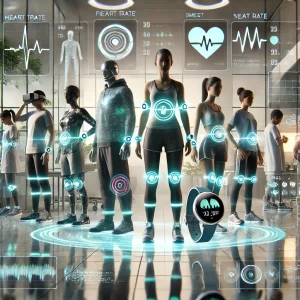
Small businesses are no longer spectators in the AI revolution, they’re key players. According to a recent survey by JPMorgan Chase, 80% of small businesses in the US are either exploring or actively implementing AI. This isn’t just a technological upgrade; it’s a strategic transformation.
AI adoption among small businesses is accelerating rapidly. In 2024, the number of businesses using AI tools doubled from the previous year. By 2025, half of these businesses plan to expand their AI initiatives. The reasons are clear: AI offers the ability to automate processes, unlock efficiencies, and deliver smarter insights, all while leveling the playing field with larger competitors.
Why Does This Matter?
The activity in the US small business market is more than a domestic story, it can often serve as a barometer for trends in other markets worldwide. As these businesses embrace AI, their successes and challenges provide valuable lessons and signals for global markets navigating similar transformations.
The Business Case for AI
Small businesses are embracing AI for practical and powerful reasons:
- Operational Efficiency: Time-consuming tasks like payroll, inventory, and accounting are now streamlined with AI.
- Scalability: AI enables smaller teams to achieve more, without adding headcount.
- Competitive Edge: Early adopters are positioning themselves as market leaders, setting the standard for innovation.
This isn’t just about staying relevant; it’s about driving growth and securing the future.
Investing in Transformation
Small businesses are backing their ambition with action:
- Higher Investments: 40% of small business leaders expect to increase capital expenditures, while 50% are raising overall budgets to support AI initiatives.
- Confidence in Growth: Two-thirds anticipate increased sales and profitability in the coming year, a clear indication that AI is delivering results.
These investments reflect more than optimism. They represent a commitment to transformation. Small businesses are proving that innovation is not the domain of the largest companies; it’s accessible to all.
The Cybersecurity Challenge
With opportunity comes responsibility. The more businesses integrate AI and other technologies, the greater the need for robust cybersecurity. In 2023, one in three small businesses reported cyberattacks, with some incidents costing as much as $7 million.
This is a stark reminder that:
- Cybersecurity is essential.
- Proactive measures, such as threat detection systems and employee training, must be prioritised.
Addressing these risks head-on ensures the gains from AI adoption aren’t lost to preventable breaches.
A Story of Resilience and Innovation
The rise of AI among small businesses is more than a technology trend, it’s a testament to resilience, adaptability, and ambition. These businesses are:
- Redefining Possibilities: Leveraging AI to deliver personalised customer experiences and predictive insights.
- Breaking Barriers: Competing on a global scale, often outperforming larger competitors.
- Creating Sustainable Growth: Building future-ready operations that thrive in an ever-changing market.
For small business leaders, the time to act is now:
- Start Small, Think Big: Identify areas where AI can deliver immediate impact.
- Build Cybersecurity into the Foundation: Protect your progress by investing in secure systems and processes.
- Upskill Your Team: Equip your employees to use AI effectively, ensuring adoption leads to innovation.
Small businesses aren’t just adapting to change, they’re driving it. They remind us that innovation is about mindset, not size. AI is opening doors once thought closed, and those who embrace it today will lead tomorrow.
Your Partner in Transformation
Are you ready to embrace AI and drive meaningful change in your business?
I specialise in helping organisations navigate digital transformation, optimise operations, and unlock new opportunities. Let’s work together to make your vision a reality.
Reach out today to start your journey toward innovation and growth.









